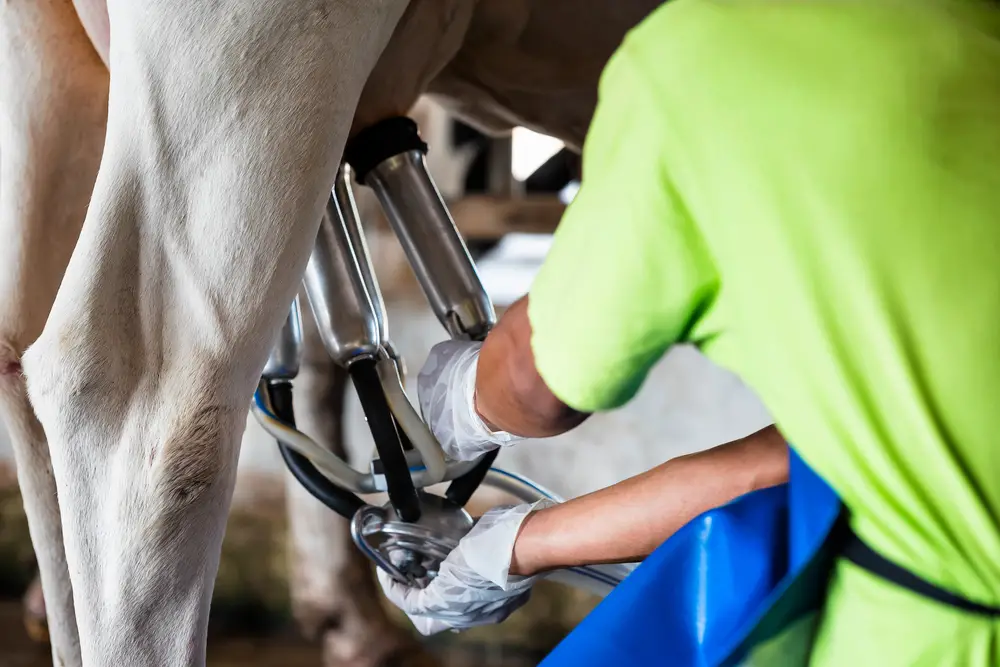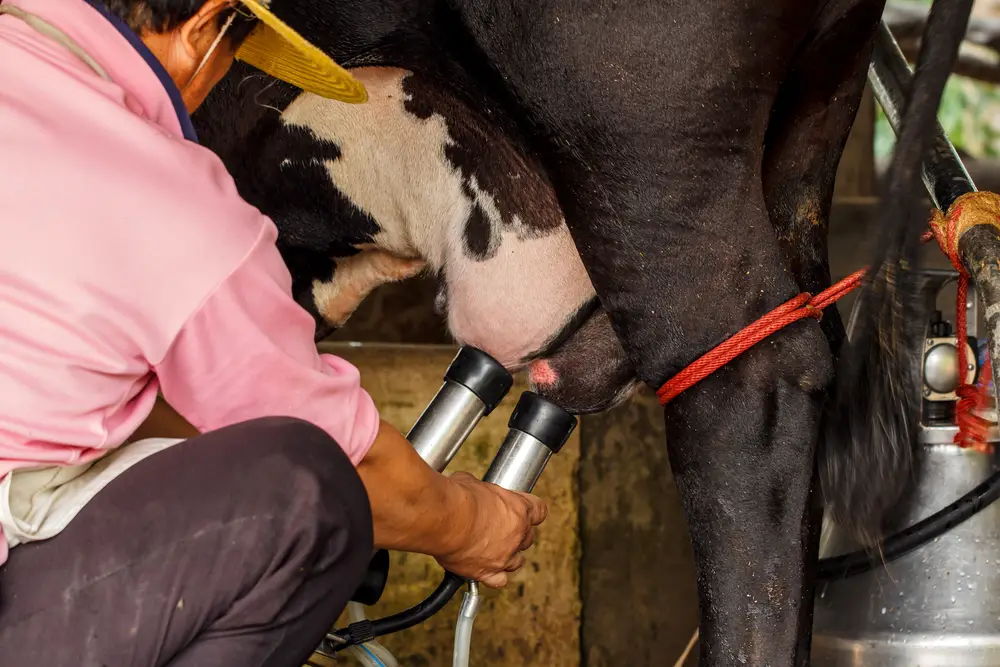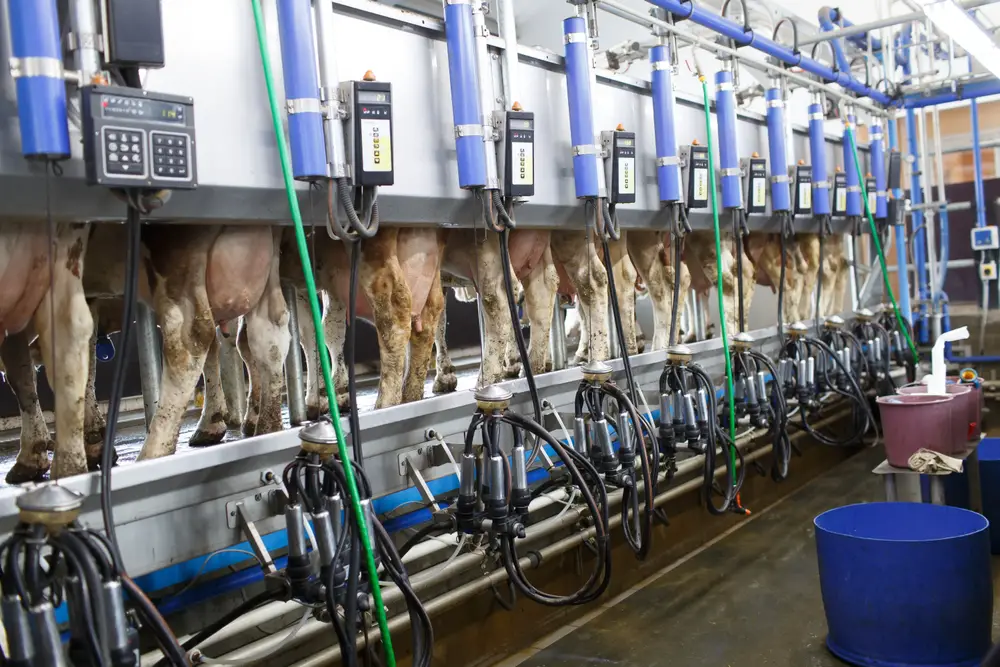Buying a milking machine for cows can be expensive and they take time to learn. They also require power, maintenance and spare parts to continue performing 100% every single morning.
We can all agree that hand-milking cows is tedious and time-consuming, not to mention sometimes too uncomfortable for the cow.
Although milking your homestead dairy cows by hand helps you create a special bond between you and the cows, you might be considering buying a milking machine to save time and your cows the agony of long milking times.
Before you buy a milking machine for your cows, here are 6 things you should know:
Table of Contents
1. It Isn’t Economical For One Or Two Low-Production Cows
Buying a milking machine for cows that produce little milk isn’t economical at all. You’ll take a long time to recover the investment money you put into the machine, despite saving you lots of time.
If you only have one family cow, you might want to postpone getting a milking machine until you have several cows on the farm. However, if your cow produces at least two and a half gallons of milk per milking, you can get the machine.
The number of cows versus the milk production levels factor changes if you have 5-10 homestead cows, each producing at least 2.5 gallons per milking. Heavy feeders like Holsteins can produce a lot more at each milking.
At this rate, you can save more time and recoup your investment faster, especially if your state allows you to sell raw milk.
2. It Takes Time To Learn Using A Milking Machine
Skilled hand milkers are scarce, and so are experienced milking machine operators. You’ll need to learn how to use the machine once you bring it to your farm.
Although learning the milking process isn’t terribly difficult, it will take some time. It would be best if you learned how to milk your cows using the machine and how to clean it after every use. Now, cleaning it isn’t something you’ll really like!

A crucial thing to consider when using a non-automated cow milking machine is to ensure you don’t leave any milk in the cow’s udder—it could cause mastitis, a common phenomenon when cows are milked using machines.
Besides learning how the machine works, you must also learn how to take care of it, including sanitizing the components that interact with milk directly.
3. You’ll Need a Reliable Power Supply
If your state is prone to frequent power blackouts, you’ll need a backup power system like a generator to power the milking machine.
Most machines for milking cows run on electricity, but some models use solar or combustion engines to power the milk or vacuum pump.
You may find an electric milking machine with a combustion engine as its backup power source.
4. A Milking Machine Is Good For Your Health, Too!
Most dairy farmers agree that getting a cow milker benefits their health and not only the cows’.
Firstly, if you have arthritis problems, you should consider buying a milker, even if your cow doesn’t produce much milk. The machine will save your hands and legs the pain of squeezing the teats and sitting awkwardly during each milking session.

If you have “heavy hands” like me, using a milking machine will benefit both you and the cow. My heavy hands mean that I work pretty slow and take a long time to milk one cow—usually up to 30 minutes instead of the recommended 10-15!
Now, my fingers and hands get sore, and the cow gets tired and restless. Of course, not to mention that the optimum milk let-down duration of about 10 minutes is long over by the time I’m done milking.
Have some more love and get your cows a milking machine.
5. Milking Machines Come In Different Types
Milking machines come in various designs. You’ll choose one depending on the size of your farm (number of cows).
A large milking system is ideal for large farms with more than 10 cows, while homestead dairy farms can do with simple systems.
Depending on the type and size of the milking machine, the basic components include:
- Vacuum gauge
- Vacuum pump
- Pulsator (the milking machine must have a pulsator)
- Milk receptacle (like a stainless steel bucket)
- Teat cups and liners
- Regulator
- Vacuum tank
- Milk pump
- Milk filter
- Milk meters (may be portable or installed permanently)
Keeping a family cow for home use requires buying a simple milking unit, such as a standalone bucket milker or a surge belly milker.
A standalone bucket milker may have one or two stainless steel buckets that stand on a flat surface to the side of the cow. It may also be a portable milking machine if the pail is placed on a pedestal with wheels.
With a bucket milker, the space under the udder will be free, and you can easily fit the milking cluster (the component comprising the teat shells, milk tubes, pulse tubes, liners, and the claw.)
A surge belly milker ‘floats’ under the udder, leaving less space between it and the floor of the milking parlor.
If your cows produce a lot of milk, you can buy a machine with a milking bucket to have more milk storage space. The receptacle of a surge belly milker is relatively small.
You must also consider the cattle breed for which you are getting a milking machine. For example, Holstein cows usually have longer teats and thus require machines with longer teat cups.
If you also want to ease other kinds of milking, such as goat or sheep milking, you’ll have to get a machine specially designed for two-teat ruminants.
6. Service Support And Spare Availability Are Paramount
Picture this, you buy a milking machine, but you don’t know how to use it, or it breaks down on your dairy farm one too many times. And the manufacturer doesn’t offer top-notch service support or after-sales services like installations and how-to-use education.
It gets even worse if spare parts for the machine aren’t readily available in your area.
When your machine breaks down, you’ll be forced to learn to repair it yourself or hire a private repair specialist if the seller or manufacturer doesn’t provide such support.

The downside to having a milking machine that breaks down too often and takes ages to repair is that you’ll have several downtimes.
Also, cows that have already become used to the soothing pulsation of the machine may not be so happy with you reverting to hand milking.
You’ll want to get your milking machine from reliable sources like Vevor and DeLaval, whose machines also come with a warranty.
A milking machine can save you time and improve milk production. The upfront purchase cost may be high, but it’s well worth it in the long run.
You can cut costs by building your own milking machine out of parts purchased separately. However, this is risky as you might end up with milking equipment that doesn’t attain food grade quality. Buying a complete machine would be better.
